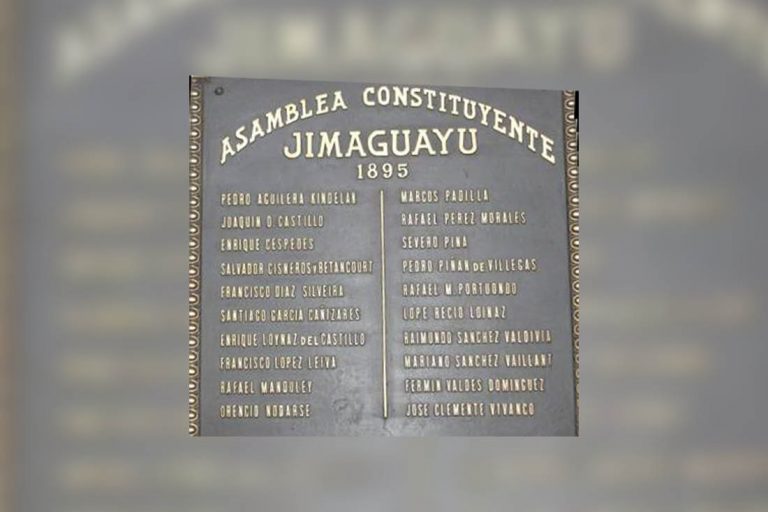On February 24th, 1895, the War for Independence restarted. From the beginning of the war and in accordance with the tradition born in Guáimaro, there was a consensus that it was necessary to formulate a new constitution as a new legal and political norm and also, international recognition of the Republic of Cuba.
When conditions changed after the Pact of Zanjón, in 1878 the Constitution of Baraguá was approved, in keeping with the circumstances in which the Mambisa forces had to act then. Therefore, it was natural that, when the war began again in 1895, it was necessary to elaborate the norms for the new fight.
Constitution of Jimaguayú. Visions
Unlike Guáimaro, the delegates did not respond to the territorial division of the country but acted as “representatives of the army corps” existing at that time. The Cubans in arms were representing their people. It was a way to overcome the localisms and regionalisms of the previous war. (Torres-Cuevas, p. 177).
In Jimaguayú, for the first time, it was explicitly defined, by naming the free and independent State as the “Republic of Cuba.”
The criterion, already visible in the Constitution of Baraguá, of a simple and practical organization prevailed. On the one hand, the Magna Carta approved in Jimaguayú was inspired by the spirit of Baraguá and already from its preamble declared:
“the separation of Cuba from the Spanish monarchy and its constitution as an independent state.”
Like Maceo in his Protest, it showed his revolutionary intransigence by underlining that every peace treaty with Spain:
“It must be based on the absolute independence of the Island of Cuba.”
No House of Representatives was created. The division of powers into Executive, Legislative and Judicial, which had been present since 1869, was maintained, but an assembly of representatives was not created in front of the executive power, the existence of a Governing Council, composed of six people, was established. It brought together the executive and legislative powers.
The phrase “all Cubans” was used to refer to individual and political rights, which implies an inclusive sense in a discriminating society due to class, race, sex and nation.
The Constitution of Jimaguayú in reality did not establish the necessary autonomy in the middle of a war for the military power, since in the Government Council it created a War Secretariat “for war matters”, while giving the Council the power to grant military ranks from colonel to major general, and also authorized intervention in military actions for “high political purposes”, thus laying the foundations for conflicts between the General-in-Chief and the civil power. (López Civeira, F. 2021).
Its validity would only be during the period of the revolutionary war.
Participants
The plenary was made up of twenty members, five for each army, the four existing army corps and a fifth in formation (two in the East, one in Camagüey, one in Las Villas, and one in the West). Among them, with a fairly low average age, were three lawyers, five doctors, three journalists, eight from various professions, and a landowner.
As President of the Government of the Republic: Salvador Cisneros, Vice President Bartolomé Masó, Secretary of War Carlos Roloff, for high military positions Máximo Gómez as General in Chief of the army, and Antonio Maceo as Lieutenant General.
Validity
Its validity was established for two years, after which, if the war did not end, a new Constituent Assembly had to be held. In correspondence with this, the Assembly of La Yaya was held in 1897.
Bibliography
López Civeira, F. (2021) “La Constitución de Jimaguayú, una Constitución mambisa.” En Trabajadores. Material PDF.
Torres-Cuevas, E. y Suárez. R. (2018) El libro de las Constituciones. Ed. Imagen Contemporánea, La Habana, Cuba.
Translated by: Aileen Álvarez García






